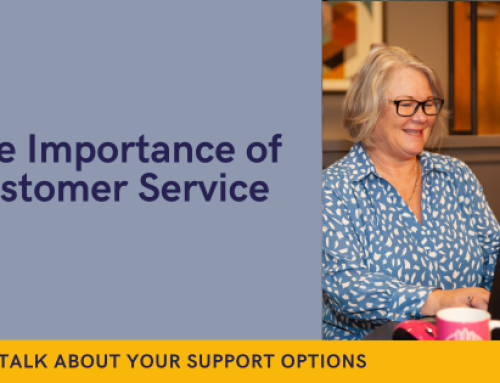Ten years ago, I wrote a book about what business owners could outsource to a virtual assistant. At the time, the idea of hiring someone remotely to handle administrative, marketing, or operational tasks was still fairly new – and convincing business owners to embrace it wasn’t easy. However, with a growing focus on efficiency, and on how business owners could “reclaim time” by delegating repetitive or time-consuming tasks to a dedicated VA, it slowly became a model that business owners could rely on.
Fast forward a decade, and the landscape of virtual support has evolved dramatically. The rise of agency-based models, the growth of digital collaboration tools, and the integration of artificial intelligence (AI) have reshaped what outsourcing looks like today. What began as a simple way to “buy back time” has grown into a global network of collaboration — a true partnership that opens the door to diverse expertise, specialised skills, and scalable solutions that reach far beyond traditional admin support.
In this piece, I’ll explore the key shifts in the industry over the last 10 years and why the combination of agency-led VA services and AI-powered tools has made outsourcing more accessible and powerful than ever before.
From Individual VAs to Agency Models
A decade ago, most business owners who worked with virtual assistants would hire an individual. While effective in many cases, this model came with many limitations. One person could only bring so much experience, knowledge, and availability to the table.
Since then, the agency model has become the dominant force in the industry, offering several key advantages:
- Breadth of Skills:
A VA Agency is more than just an individual – it’s a team of professionals working seamless together to provide an overall service; their collective knowledge far outstrips that of just one person. Which means business owners can access a far wider range of expertise, marketing, operations, design, project management, bookkeeping, and more, without having to recruit and manage multiple hires. - Continuity and Reliability:
If an individual VA is sick, takes leave, or moves on, the business owner faces disruption. Agencies, on the other hand, offer built-in continuity because the team structure allows for coverage and smooth handovers which in turn makes it more cost effective. - Scalability:
As businesses grow so do their needs. An agency can quickly add or reassign resources to support new priorities, whether that’s launching a marketing campaign, handling customer service, or creating thought leadership content. - Professional Development:
Many agencies invest in training their teams, ensuring that their assistants stay ahead of trends, tools, and best practices. This means business owners get more than just execution: they get cutting-edge support.
In short, the agency model amplifies the value of outsourcing. Rather than relying on the experience of one individual, business owners tap into a collective knowledge base, making it more strategic, sustainable, and growth-focused. With one invoice it can cover many hires and higher costs.
The Rise of AI in Outsourcing
Another major shift over the last decade is the rapid advancement and adoption of artificial intelligence. AI has moved from being a futuristic concept to an everyday business tool. For VA agencies, AI has become a powerful enabler that enhances productivity, creativity, and efficiency.
Some of the biggest areas where AI has transformed virtual support include:
- Research & Insights:
What used to take hours of manual work, such as competitor research, industry analysis, or market trend tracking, can now be completed in minutes with AI-powered tools. Virtual assistants can generate summaries, compare data sets, and highlight key insights at a speed that was unthinkable a decade ago. - Content Creation & Thought Leadership:
AI has also transformed the way thought leadership content is created. Virtual assistants can now use AI smart tools to draft articles, social posts, and reports and more, then review and refine them to capture the client’s unique voice and expertise. It’s a powerful mix of human creativity and machine efficiency, helping businesses produce high-quality content faster than ever. But it’s important to remember – AI isn’t foolproof or a replacement for people; it’s simply a tool that helps bring great ideas to life at a fraction of the cost. - Automation of Routine Tasks:
Scheduling, inbox management, data entry, and reporting have all become faster and more accurate thanks to AI. Virtual assistants can now automate repetitive tasks, and create intelligent workflows, freeing them up to focus on higher-value activities. - Customer Experience:
With the rise of AI chatbots and intelligent CRMs, agencies tap into this unending wealth of information and can help businesses deliver 24/7 support to their customers. This means better responsiveness, improved customer satisfaction, and lower operational costs. - Open all hours
No matter where a business is based it can gain access to worldwide resources that weren’t available before, meaning you can literally work anywhere, and so can your VA, without it causing you any disruption.
It’s important to remember what matters the most here is that the role of AI isn’t about replacing humans; it’s about working in tandem with them. By utilising the power of AI, it helps to speed up work generation, and by integrating AI into their workflows, virtual assistant agencies have elevated their value proposition, enabling them to deliver more for less and empowering business owners to stay competitive.
Why the Combination of Agencies and AI Is a Game-Changer
What makes today’s virtual assistant landscape so powerful is the combination of two forces: the agency model and AI. Together, they offer business owners a level of support that is extremely comprehensive, cost-effective, and more scalable than ever before.
- Agencies provide human expertise and strategic thinking. They understand context, nuance, and long-term goals.
- AI provides speed, efficiency, and scalability. It can process vast amounts of data, generate ideas, and automate repetitive work.
When combined, business owners get the best of both worlds: strategic, creative, and skilled support that is enhanced by cutting-edge technology. For example, a business owner might ask their agency to develop a thought leadership campaign. The creative thought process is driven by a human, who can then use the AI tools to build a framework of what is needed.
The AI helps generate initial drafts, identify trending topics, and suggest keywords. The agency team then refines/enhances the content, adds industry insights, and ensures it aligns with the client’s brand voice.
The result: high-quality, impactful content delivered faster and at a lower cost than traditional methods.
The Business Case: More Done, Less Cost
For business owners, the appeal of this new outsourcing model comes down to two main factors: productivity and cost.
- More Done in Less Time:
With an agency team supported by AI, tasks that once took weeks can now be completed in days, or even hours. Business owners can move faster, adapt quickly, and stay ahead of competitors. - Lower Operational Costs:
- Hiring and building a reliable in-house team for every specialised skill can be costly. Outsourcing to an agency gives access to a wide range of expertise without the extra overheads of salaries, benefits, or training. Add in AI, and tasks get done more efficiently and cost-effectively.
- Focus on Growth:
By delegating operational and marketing tasks to an agency, business owners can focus on what they do best: building relationships, innovating, and steering their company toward growth.
However, there is the need for transparency. Clients should be told where and how AI is being used. It needs to be clearly understood, that this doesn’t replace the human side, nor is AI 100% accurate. This ensures that content appearing in the public domain can be monitored effectively, safe guarding against business sabotage and allowing it to enhance business development.
Looking Ahead: The Next 10 Years
If the last decade has been about scaling virtual support and integrating AI, the next 10 years will be about deepening partnerships and personalising solutions. We are likely to see:
- Smarter AI: Even more intuitive tools that understand context, intent, and tone, further streamlining workflows.
- Hyper-specialised Agencies: Niche-focused agencies that cater to industries like healthcare, finance, or tech, offering tailored solutions.
- Global Talent Integration: As remote work continues to be normalised, agencies will draw from an even wider global pool of talent.
- Data-Driven Decision Making: Agencies will increasingly provide not just support but also strategic insights, using real-time data to help business owners make better decisions.
The opportunities are vast, and business owners who embrace this evolving model will have a significant competitive advantage.
Final Thoughts
When I first wrote about virtual assistants ten years ago, the focus was on a simple idea – outsourcing tasks to reclaim time. Whilst that principle still holds true, the landscape has evolved dramatically. Today, virtual assistant agencies supported by AI offer far more than time savings. They’re partners that help businesses grow, innovate, and stay ahead – while the human touch ensures results truly hit the mark. Outsourcing is no longer just about getting help; it’s about transforming your business and unlocking the endless potential that comes when people and technology seamlessly work hand in hand. And I, for one, can’t wait to see where it goes next.





